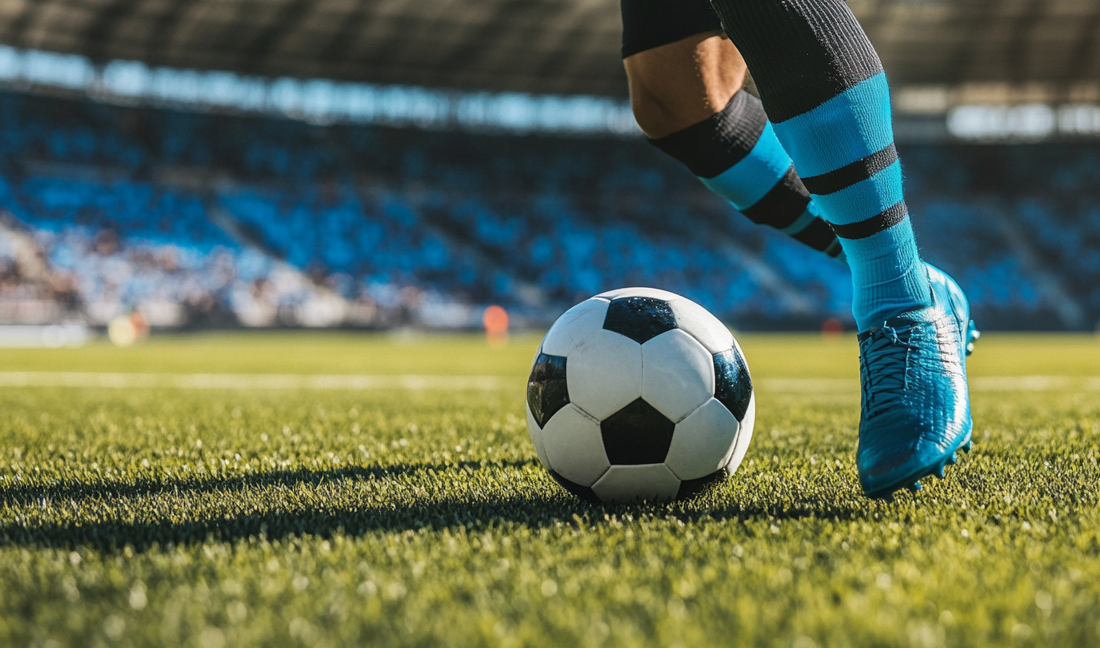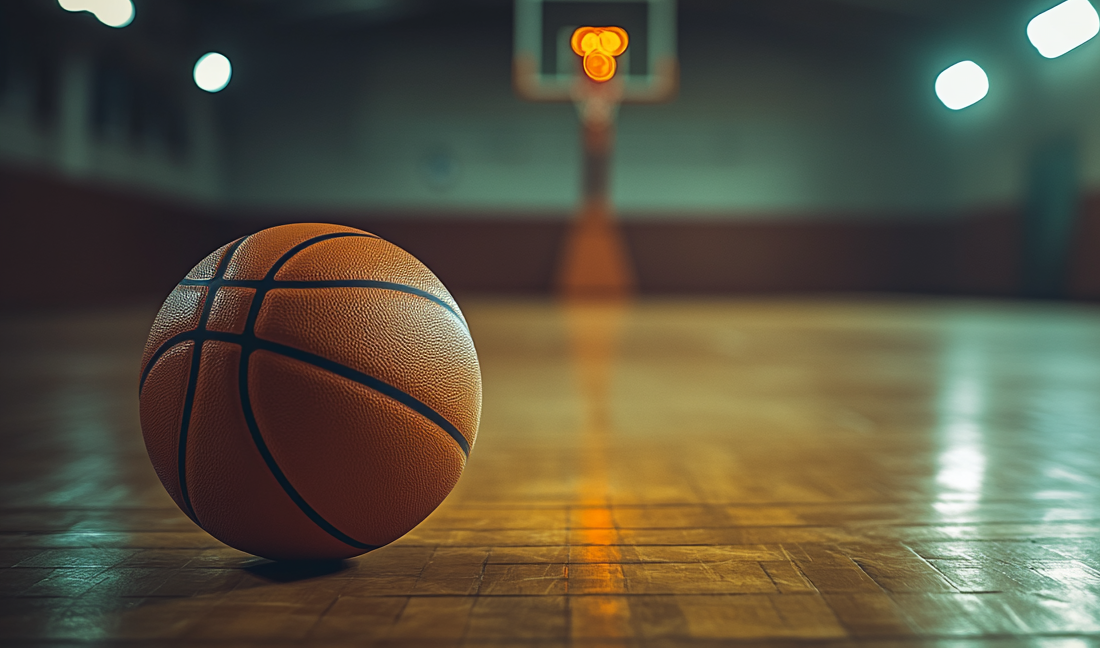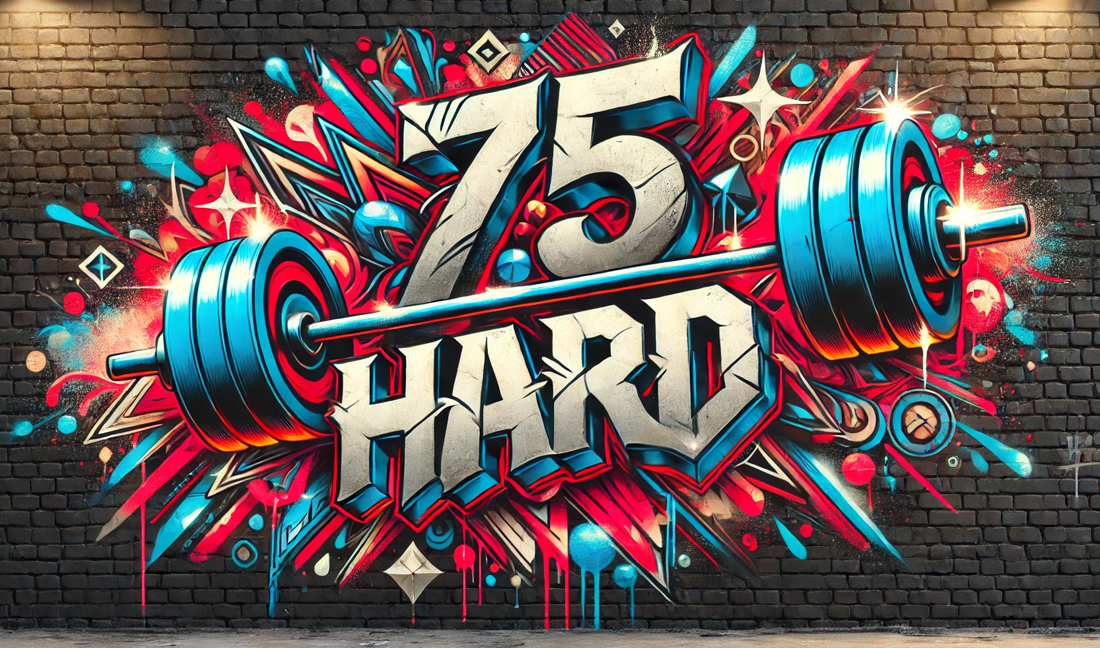Strong glutes aren’t just about looking good – they’re the powerhouse of your body. From supporting your posture to improving athletic performance, your glutes play a vital role in everyday movements and overall strength. But how do you take your glutes from average to extraordinary? That’s where the right booty gains glute workout comes in.
In this guide, we’ll dive into the science of building your glutes, tackle common myths, and provide you with a results-driven workout to unlock your booty’s full potential. Whether you’re looking to lift heavier, move better, or simply feel more confident, this is your ultimate roadmap to serious glute gains. Let’s get started!
1. Understanding Your Glutes
Your glutes aren’t just for sitting pretty – they’re the powerhouse muscles responsible for movement, stability, and strength. This trio of muscles includes the gluteus maximus, the largest muscle in your body, which generates power for activities like running and jumping. Supporting it are the gluteus medius and gluteus minimus, which play crucial roles in balance, hip stability, and lateral movements.
To truly unlock your booty’s potential, you need to target all three muscles. However, many people make common mistakes in glute training, like relying too much on their quads or hamstrings during lifts. Poor activation or improper form can limit results and even increase the risk of injury.
Focusing on proper technique, engaging the mind-muscle connection, and using exercises that hit each glute muscle ensures balanced strength and development. When your glutes are firing on all cylinders, you’ll not only see better aesthetics but also experience improved posture, reduced injury risk, and enhanced athletic performance.
2. The Science of Booty Gains
Building strong, well-defined glutes requires more than just showing up at the gym—you need to understand the science behind muscle growth and activation. The key to unlocking those booty gains lies in principles like hypertrophy, progressive overload, and mind-muscle connection. Let’s break it down.
How Muscle Growth Works
Hypertrophy, or muscle growth, occurs when your muscles are exposed to stress that challenges them beyond their current capacity. This stress causes microscopic tears in the muscle fibers, which then repair and grow stronger during recovery. For your glutes, this means focusing on exercises that create enough tension and stretch to stimulate growth.
The Power of Progressive Overload
Your muscles adapt quickly to familiar challenges. Progressive overload is the principle of gradually increasing the demands placed on your muscles to keep them growing. This can be achieved by:
- Increasing weight: Gradually lift heavier weights over time.
- Adding reps or sets: Push for extra effort in your workouts.
- Adjusting tempo: Slow down your movements to create more time under tension.
By progressively increasing the challenge, your glutes will be forced to adapt, leading to stronger and more defined muscles.
Time Under Tension: Slow and Controlled Wins
Time under tension (TUT) refers to how long your muscles are working during an exercise. For glute training, this means slowing down the eccentric (lowering) phase of a movement, like when you lower yourself in a squat or return to the floor in a hip thrust. This creates more stress on the muscle, enhancing growth and activation.
Mind-Muscle Connection: Engage to Grow
One of the most overlooked aspects of glute training is the mind-muscle connection. This involves focusing on contracting and engaging your glutes during every rep. Many people inadvertently let their quads or lower back take over, limiting glute activation.
Pro Tip: Before starting your workout, perform glute activation exercises like glute bridges or clamshells. These warm-ups “wake up” your glutes, ensuring they’re fully engaged during your main lifts.
The Bottom Line
The science of booty gains revolves around applying the right amount of stress to your glute muscles, engaging them properly, and allowing them to recover. By focusing on progressive overload, time under tension, and a strong mind-muscle connection, you’ll set yourself up for real results. In the next chapter, we’ll dive into the ultimate glute-building workout to put this science into action.
3. The Ultimate Booty Gains Glute Workout
It’s time to put the science into action with a killer glute workout designed to target all three glute muscles – the gluteus maximus, medius, and minimus. This workout combines strength, endurance, and activation to help you unlock your booty’s full potential. Whether you’re new to glute training or looking to level up, this routine will deliver serious results.
Warm-Up (5–10 Minutes)
Before diving into the main workout, get your glutes fired up and ready to work. This prevents injury and ensures maximum activation.
| Exercise | Description | Sets / Reps |
|---|---|---|
Glute Bridges | Focus on squeezing your glutes at the top of the movement. | 2 sets of 10 reps |
Sidekick with Bent Knee | Target the glute medius and minimus. | 2 sets of 15 reps per side |
Squats without Weight | Loosen up your hips and prepare for dynamic movements. | 10 reps |
The Glute-Building Circuit
Perform the following exercises in a circuit format. Rest for 30–60 seconds between exercises and repeat the entire circuit 2–3 times, depending on your fitness level.
| Exercise | Description | Sets / Reps |
|---|---|---|
Hip Thrusts | Use a barbell or resistance band for added intensity. Focus on driving through your heels and fully extending your hips at the top. This is the gold standard for glute activation and building strength in the gluteus maximus. | 3 sets of 12–15 reps |
Bulgarian Split Squats | Rest your back foot on a bench and lunge forward with your front leg. Keep your weight on your front heel to target the glutes. Builds unilateral glute strength and improves balance. | 3 sets of 10 reps per leg |
Romanian Deadlifts | Hold dumbbells or a barbell, keeping a slight bend in your knees as you hinge at the hips. Focus on stretching and contracting your glutes. Strengthens the posterior chain, including glutes, hamstrings, and lower back. | 3 sets of 10–12 reps |
Step-Ups | Step onto a bench or sturdy surface, driving through your heel to lift your body. Lower yourself back down with control. Functional movement that targets the glutes and improves stability. | 3 sets of 12 reps per leg |
Lateral Band Walks | Place a resistance band around your thighs and step sideways, keeping tension in the band throughout. Targets the gluteus medius for stability and lateral strength. | 2 sets of 20 steps |
Cooldown (5–10 Minutes)
After crushing your glute circuit, take time to stretch and recover. This helps reduce soreness and improve flexibility.
- Pigeon Pose (1 minute per side): Stretch your glutes and hips deeply.
- Hamstring Stretch (30 seconds per leg): Release tension in your posterior chain.
- Seated Forward Fold (1 minute): Stretch your lower back and glutes.
Pro Tips for the Workout
- Focus on Form: Quality reps are more important than quantity. Engage your glutes with every movement.
- Use Resistance Bands: Add bands to exercises like hip thrusts and lateral walks for an extra challenge.
- Increase Difficulty Over Time: Gradually increase weights or reps to apply progressive overload.
4. Tips for Maximizing Your Booty Gains
Building strong, sculpted glutes requires more than just following a workout plan – it’s about using smart strategies to amplify your efforts and avoid common pitfalls. These tips will help you take your glute training to the next level and ensure you’re maximizing every rep, set, and session.
Master the Mind-Muscle Connection
One of the most critical elements of glute training is actively engaging your glute muscles during every exercise. Many people inadvertently rely on their quads or hamstrings, limiting the effectiveness of their workout. To strengthen the mind-muscle connection:
- Focus on Squeezing Your Glutes: At the top of movements like hip thrusts or squats, pause for a moment and consciously squeeze your glutes.
- Pre-Activate with Warm-Ups: Include glute bridges, clamshells, or lateral band walks at the start of your session to “wake up” your glutes and ensure they’re ready to fire.
Prioritize Progressive Overload
Muscles grow when they’re challenged to handle more stress over time. Progressive overload is the key to consistent gains. To apply this principle:
- Increase Resistance: Gradually add weight to exercises like hip thrusts, deadlifts, and squats.
- Add Volume: Perform extra reps or sets to push your muscles further.
- Adjust Tempo: Slow down your movements, especially the eccentric (lowering) phase, to increase time under tension.
By consistently increasing the challenge, your glutes will adapt and grow stronger.
Focus on Form, Not Just Weight
Lifting heavy is important, but proper form should always take priority. Poor technique can shift the focus away from your glutes and onto other muscles, like your quads or lower back. To maintain good form:
- In Hip Thrusts: Keep your chin tucked and drive through your heels, fully extending your hips without over-arching your lower back.
- In Squats: Sit back as if lowering yourself onto a chair, ensuring your knees don’t cave inward.
Perfecting your form maximizes glute activation and reduces the risk of injury.
Mix Up Your Routine
Variety is the spice of life – and a secret weapon for building your glutes. Sticking to the same exercises can lead to a plateau as your muscles adapt. Add variety by:
- Incorporating New Movements: Try exercises like single-leg Romanian deadlifts, cable kickbacks, or frog pumps.
- Targeting Different Angles: Use lateral band walks or side-lying hip abductions to hit the gluteus medius and minimus.
- Changing Equipment: Swap between resistance bands, dumbbells, and barbells for a fresh challenge.

Fuel Your Gains
Nutrition plays a vital role in muscle growth. Without the right fuel, your glutes won’t have the resources they need to repair and grow. Here’s what to prioritize:
- Protein: Aim for 1.6–2.2 grams per kilogram of body weight daily to support muscle repair.
- Healthy Fats: Include sources like avocados, nuts, and olive oil to maintain hormonal balance.
- Carbohydrates: Provide the energy needed for intense training with complex carbs like sweet potatoes, quinoa, and oats.
Rest and Recover
Muscles grow during recovery, not during your workout. Overtraining can stall progress and even lead to injury. To optimize recovery:
- Take Rest Days: Allow your glutes at least 48 hours to recover between intense sessions.
- Sleep Well: Aim for 7–9 hours of quality sleep each night to support muscle repair and overall health.
- Stretch It Out: Incorporate post-workout stretching or yoga to reduce soreness and improve flexibility.
Stay Consistent
Consistency is the ultimate secret to glute-building success. Results take time, so commit to your training plan and focus on steady progress rather than instant gratification. Even small improvements, like adding an extra rep or slightly increasing weight, can lead to significant changes over time.
5. Common Myths About Glute Training
When it comes to glute training, misinformation can derail progress or lead you to ineffective routines. Separating fact from fiction is crucial to building strong, well-defined glutes. Let’s debunk some of the most common myths about glute training and get to the truth that will power your progress.
Myth 1: Squats Are All You Need for Glute Gains
Squats are often hailed as the king of lower-body exercises, but they’re not the only – or even the best – glute builder. While squats do activate the glutes, they heavily engage other muscles, such as the quads and hamstrings, which can overshadow glute activation for some individuals.
Truth: To effectively target your glutes, you need a variety of exercises that isolate and engage them from different angles. Hip thrusts, Romanian deadlifts, and lateral band walks are excellent additions to your routine for balanced glute development.
Myth 2: Heavy Weights Are Only for Bodybuilders
Many people believe that lifting heavy weights will make them “bulky” or that glute training should only involve light weights and high reps. This misconception often holds back progress, especially for women aiming to sculpt their glutes.
Truth: Progressive overload, which includes lifting heavier weights over time, is essential for building muscle. Adding resistance challenges your glutes and promotes growth, resulting in a toned, strong look – not bulk.
Myth 3: You Can Spot-Reduce Fat on Your Glutes
The idea of targeting fat loss in a specific area through focused exercises is a persistent myth in fitness. Some believe doing endless glute exercises will burn fat exclusively from their hips and thighs.
Truth: Fat loss is a full-body process influenced by diet, overall activity levels, and genetics. While glute exercises strengthen and shape the muscles, reducing fat in this area requires a combination of calorie control, regular cardio, and strength training.
Myth 4: More Reps Equals Better Results
Performing endless reps of exercises like bodyweight squats or donkey kicks might feel productive, but it’s not the most efficient way to build glute strength or size. High-rep, low-resistance routines often fail to adequately challenge the muscles.
Truth: Fewer reps with heavier weights or increased resistance are more effective for muscle growth. Aim for 8–15 reps per set, depending on your goal, and ensure the load is challenging enough to push your muscles.
Myth 5: Glute Workouts Should Be Done Every Day
It’s tempting to think that training your glutes daily will lead to faster results, but overtraining can actually hinder your progress. Muscles grow during recovery, not during the workout itself.
Truth: Give your glutes 48 hours of recovery between intense sessions. Training 2–3 times per week is sufficient for building strength and size while allowing your muscles to repair and grow.
Myth 6: Everyone Can Follow the Same Glute Routine
Some workout routines promise to deliver the “perfect booty” for everyone, but individual differences like body structure, muscle imbalances, and fitness levels mean that what works for one person may not work for another.
Truth: Your glute routine should be tailored to your unique needs and goals. For example, someone with weak glute activation may need to focus on pre-activation exercises, while others might benefit from heavier compound lifts.
Myth 7: Cardio Is Bad for Glute Gains
There’s a misconception that cardio burns muscle, undoing all the work you’ve put into building your glutes. This leads some people to avoid cardiovascular exercise altogether.
Truth: Moderate cardio can complement your strength training by improving endurance, circulation, and recovery. Activities like incline walking, stair climbing, or running can even engage the glutes, making them a valuable addition to your routine.
Myth 8: Glute Training Is Only for Women
Glute training is often marketed toward women for aesthetic reasons, leading some men to neglect glute exercises altogether. However, strong glutes are essential for everyone.
Truth: Glute strength improves athletic performance, supports the lower back, and enhances overall mobility. For men, developing strong glutes can improve lifts like squats and deadlifts while reducing injury risk.
6. Track Your Progress and Stay Motivated
Building strong, sculpted glutes takes time, consistency, and effort. Along the way, tracking your progress and finding ways to stay motivated are essential to achieving your goals. By setting benchmarks, celebrating small wins, and keeping the process enjoyable, you’ll stay on track and maintain the drive needed to unlock your ultimate booty gains.
Set Clear and Measurable Goals
Having clear goals gives your workouts purpose and direction. Instead of vague objectives like “build a better booty,” focus on specific, measurable targets such as:
- Increasing your hip thrust weight by 20% in the next eight weeks.
- Adding one inch to your glute circumference over three months.
- Perfecting your form on exercises like Bulgarian split squats.
Setting SMART goals (Specific, Measurable, Achievable, Relevant, Time-bound) keeps you motivated and helps you measure progress effectively.
Track Your Workouts
Keeping a record of your workouts helps you monitor improvements and ensures you’re consistently applying progressive overload. Use a journal, fitness app, or spreadsheet to log:
- Exercises performed.
- Sets, reps, and weights used.
- Notes on form, difficulty, or energy levels.
Review your logs every few weeks to identify patterns, celebrate wins, and adjust your program as needed.

Take Progress Photos and Measurements
Sometimes, visual changes can tell a more powerful story than the numbers on a scale. Take progress photos every 4–6 weeks in the same lighting, angles, and outfit to see how your hard work is paying off.
Additionally, measure your glutes, hips, and thighs with a tape measure to track changes in size. Seeing tangible progress is a huge motivator to keep pushing forward.
Celebrate Small Wins
Progress doesn’t always come in giant leaps, and that’s okay. Celebrate the small victories, like:
- Adding 5 pounds to your hip thrust.
- Mastering proper form on a challenging exercise.
- Staying consistent with your workout schedule for a month.
Recognizing these milestones keeps you positive and motivated for the long haul.
Find Your Motivation
Motivation ebbs and flows, so it’s important to find what drives you. Here are some ideas:
- Visual Inspiration: Follow fitness influencers or save transformation stories for a dose of motivation.
- Workout Buddies: Training with friends or joining a fitness community can make your workouts more fun and social.
- Fitness Challenges: Challenge yourself with new goals, like achieving a personal best in hip thrusts or completing a 30-day workout streak.

Make It Fun
If your workouts feel like a chore, it’s easy to lose interest. Keep things exciting by:
- Switching up your exercises or routines regularly.
- Creating playlists of your favorite high-energy songs to boost your mood during workouts.
- Incorporating gamification, such as rewarding yourself with something you love (new workout gear, a cheat meal, etc.) when you hit milestones.
Focus on the Big Picture
Building your dream glutes is a journey, not a sprint. While it’s important to track progress, don’t get discouraged by minor setbacks or slow changes. Trust the process, focus on consistency, and remind yourself why you started.
Unlock Your Booty Gains
Building strong, sculpted glutes takes time, effort, and a smart approach. With the right booty gains glute workout, consistency, and a commitment to progress, you can achieve more than just aesthetic results. Strong glutes improve posture, enhance athletic performance, and reduce your risk of injury, making them a vital part of your fitness journey.
Remember, the key is to stay consistent, track your progress, and focus on the process, not just the results. Whether you’re crushing hip thrusts, fine-tuning your form, or celebrating small wins, every step gets you closer to your goals. Trust the process, have fun, and unlock the power of your glutes – because your booty gains are just getting started!




